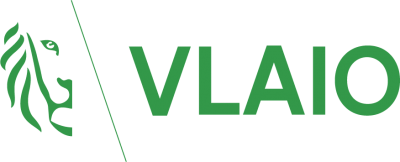Topics
We organise our actions in six thematic & strategic agendas:
Strategic Agendas:
Bio-economy
Circular Construction
Chemicals/Plastics
Manufacturing Industry
Food Chain
Water Cycles
Seven leverages provide additional support:
Leverage effects:
Lever Policy Instruments
Lever Circular Procurement
Lever Communication
Lever Innovation & Entrepreneurship
Lever Financing
Lever Jobs & Skills
Lever Research
What, why and how?
Why are we pursuing a circular economy?
Future visions 2050
How do we see our circular future?
About our management
Who steers what at Flanders Circular?
Future visions
Flanders circular in 2050
With a broad group of stakeholders, we created visions of the future for a circular Flanders.
We wrote them down in a voluminous document and illustrated the ideas.
This vision text is not a list of everyone's individual opinions. Rather, it is a text that is the greatest common denominator of the visions and views of the experts consulted and involved. Our ambition is to create a compelling and inspiring picture of the future, supported by as many parties as possible. We hope that these visions of the future can encourage and help you define working paths and actions needed today and tomorrow for the transition to a circular economy and a sustainable society.
The future visions by 'demand system'
We divided our future visions into eight parts, so-called demand systems. We give a brief summary below:
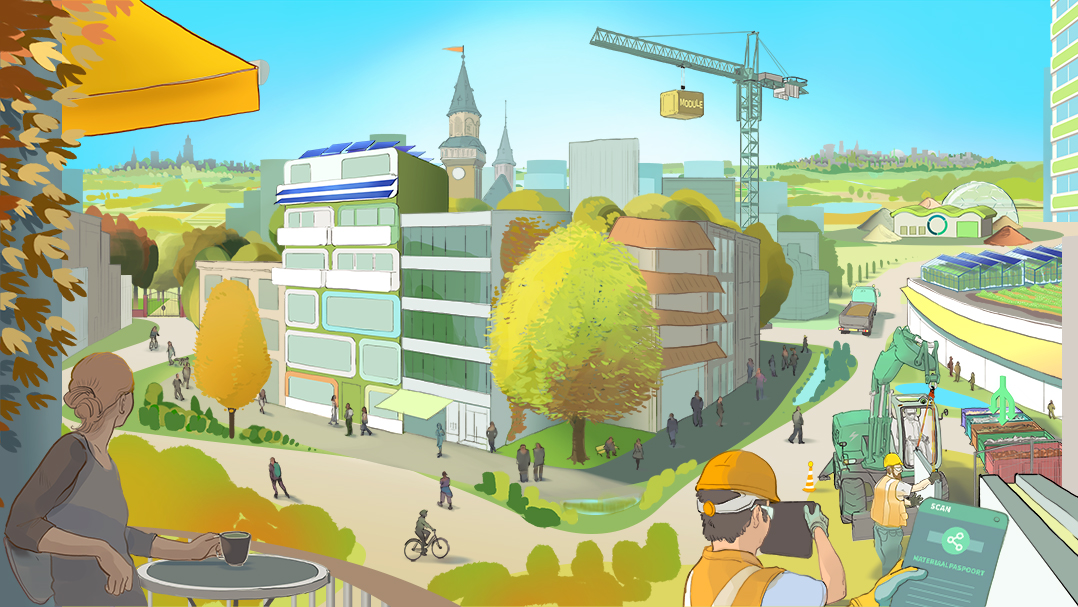
Towards circular building and living
Buildings depend on several chains, each of which must be brought into circulation. The Flemish economy can make a positive impact on those chains by taking the lead in numerous organisational, sociocultural and technological innovations.
At the organisational level, we are thinking of innovations such as adapted taxation that supports new housing models and the implementation of new building standards that facilitate more flexible construction and new business models such as "living-as-a-service". System thinking as a basis for material recovery and its repurposing through material databases, is also a fruitful avenue. Within the sociocultural framework, there is an important role for numerous subsystems and more flexible forms of living that evolve with life.
Finally, thanks to technological innovations, we can move towards CO2-neutral buildings that are no longer net energy consumers but energy producers. In addition, designs can also be optimised in terms of material performance and with a view to reusing materials. In this section of the text, we will elaborate on the different paths we can take to move towards more circular building and living.
.jpg)
Towards circular mobility
Transport and mobility use different chains (energy, vehicles, space, infrastructure and land) and have a heavy impact on the cycles. It is therefore crucial that we organise this part of our society as circularly as possible. We do this by making it fiscally more interesting for citizens and companies to act circularly.
In addition, we also make it practically feasible by creating green-blue residential centres in which different functions are interwoven so that people have to move around minimally. And if relocation is necessary, they can fall back on a well-organised, multimodal transport network. That network allows for the smooth combination of numerous shared modes of transport, creating a new standard.
Finally, vehicle production is also organised differently: vehicles that emit polluting gases are no longer produced. Moreover, vehicles are built from modular components that are easily replaceable, making recycling and reuse much easier to organise.
TOP ↑ READ MORE >
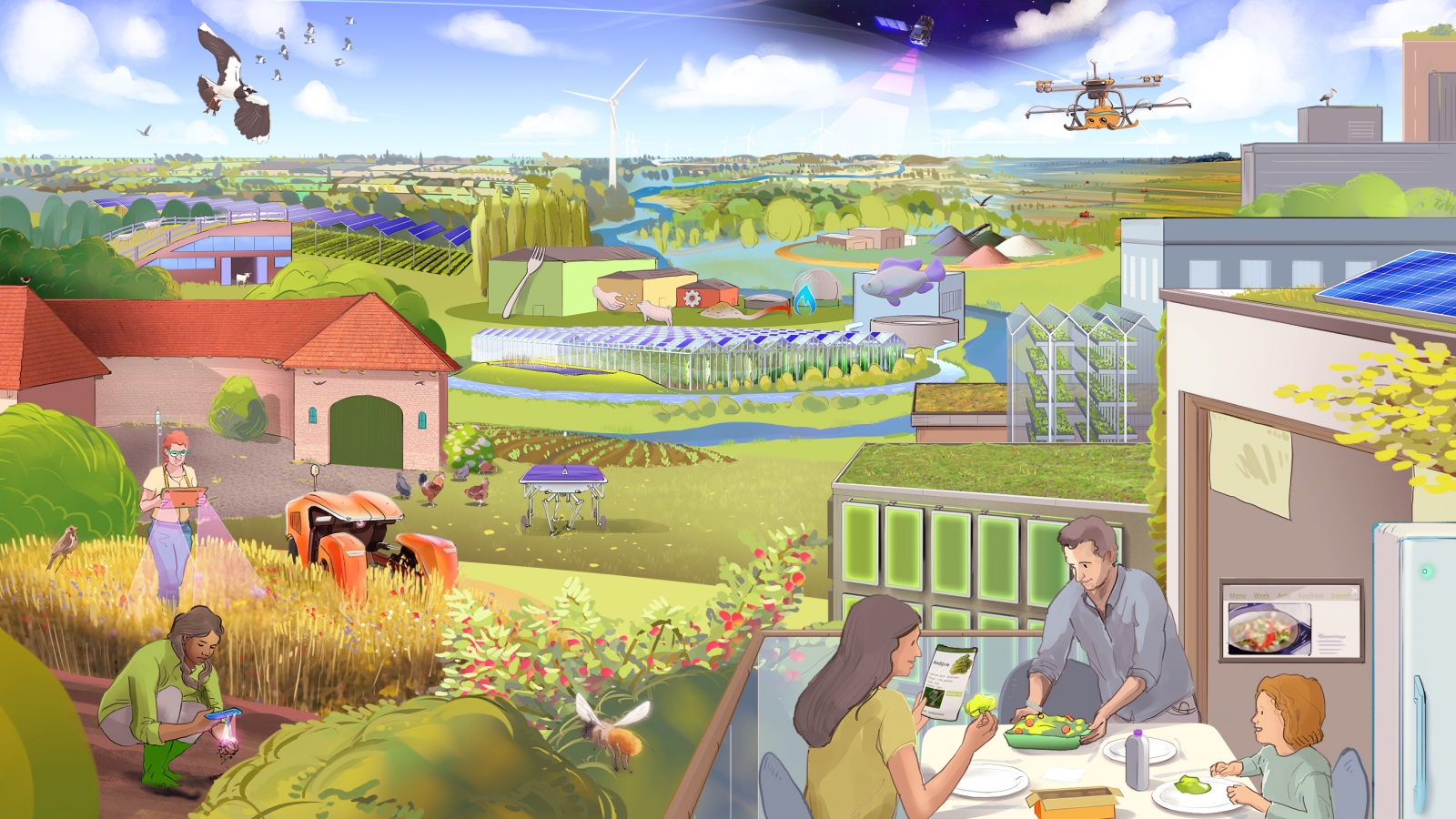
Food in a circular economy
Our food production uses different chains (energy, water, logistics, distribution, space, bio-resources, nutrients and packaging) and also has an impact on cycles. It will be our great challenge to provide a circular answer to 3 specific issues by 2050: organising an adequate food supply for 10 billion people, further ecological sustainability of our agricultural and food system and creating sufficient space for a bio-based economy.
As a strong player in the fields of circularity, food and knowledge & innovation, Flanders has all the assets to take on a pioneering role in this. To shape this new circular model, we need to optimise the input, the use of food products and the management of residual flows. This can be done by setting up a more circular production system that respects the limits of our environmental use space.
On a sociocultural level, this calls for a shift in our mindset towards less losses, over-consumption and a stronger focus on plant and seasonal products and on animal-derived products with lower environmental impact. Finally, technology can play a supporting role in this through, among others, high-tech and low-tech applications to optimise the use of inputs, food and residue streams and the development of new non-land-based production systems.
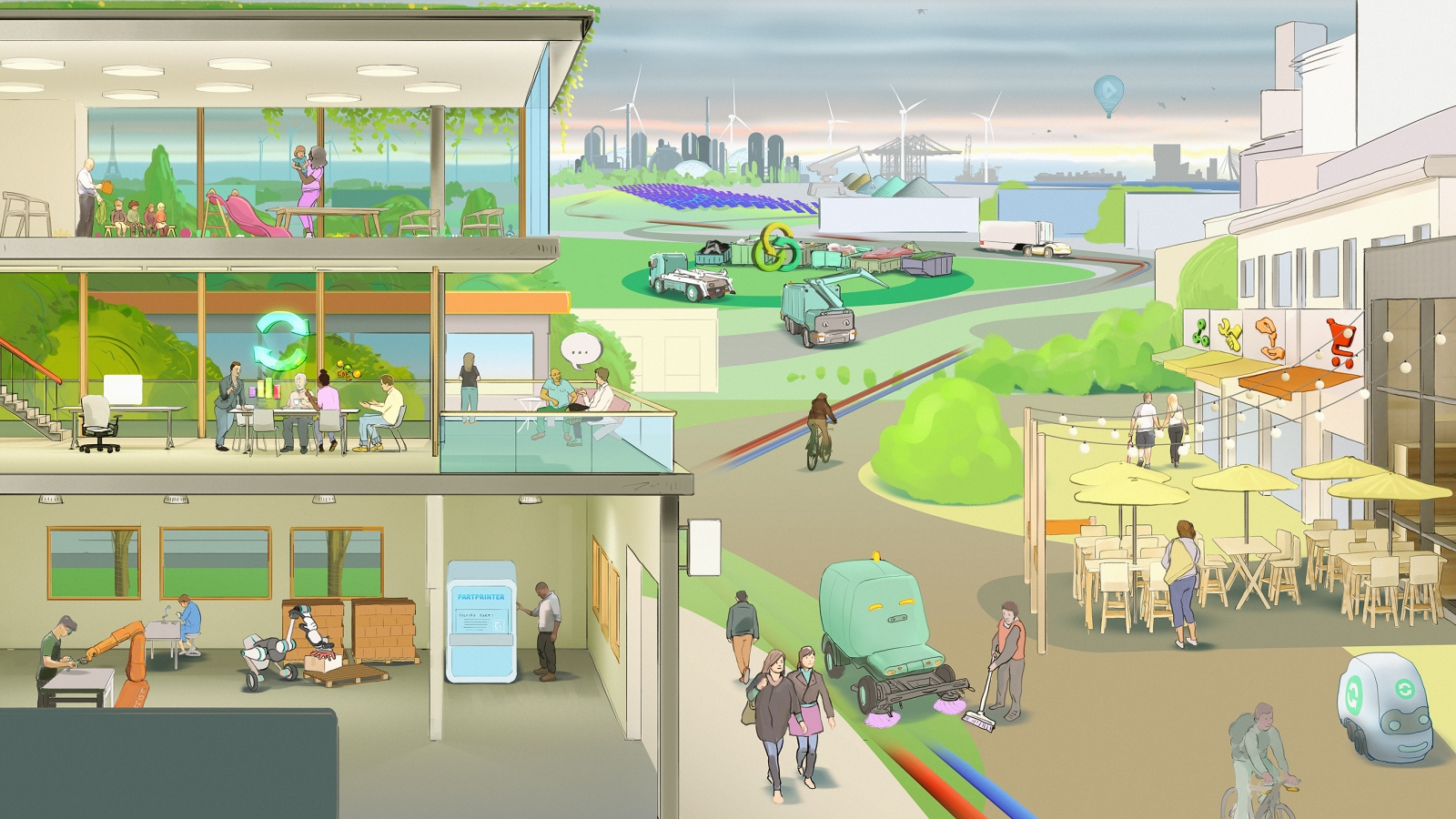
Working and producing in a circular economy
In terms of work and production, the circular economy of the future is characterised by keywords such as balance, quality and value retention, local and sustainable. External costs are expected to be included in market prices by 2050. Thus, high-quality, long-life products and services will also become the most financially interesting. This is made possible in part by service models that focus on collaboration, sharing and dematerialisation versus ownership and material thinking.
Moreover, these ideas are reinforced by updated legislation geared towards a circular economy. The lifespan of products is extended through repair and maintenance. They are put to good use for as long as possible and are reused, reassembled and recycled at the end of their life. This approach in turn creates additional local and regional employment, including for short-skilled people. Flanders is thus becoming a true integrated circular hub.
As waste streams from one company become raw materials for another, an industrial symbiosis is created within sectors and even between different sectors. In the labour market itself, more attention is paid to physical and mental health and the focus is on a socially viable way of working throughout one's career. This makes work more compatible with caring for children and the elderly, which is beneficial for everyone.
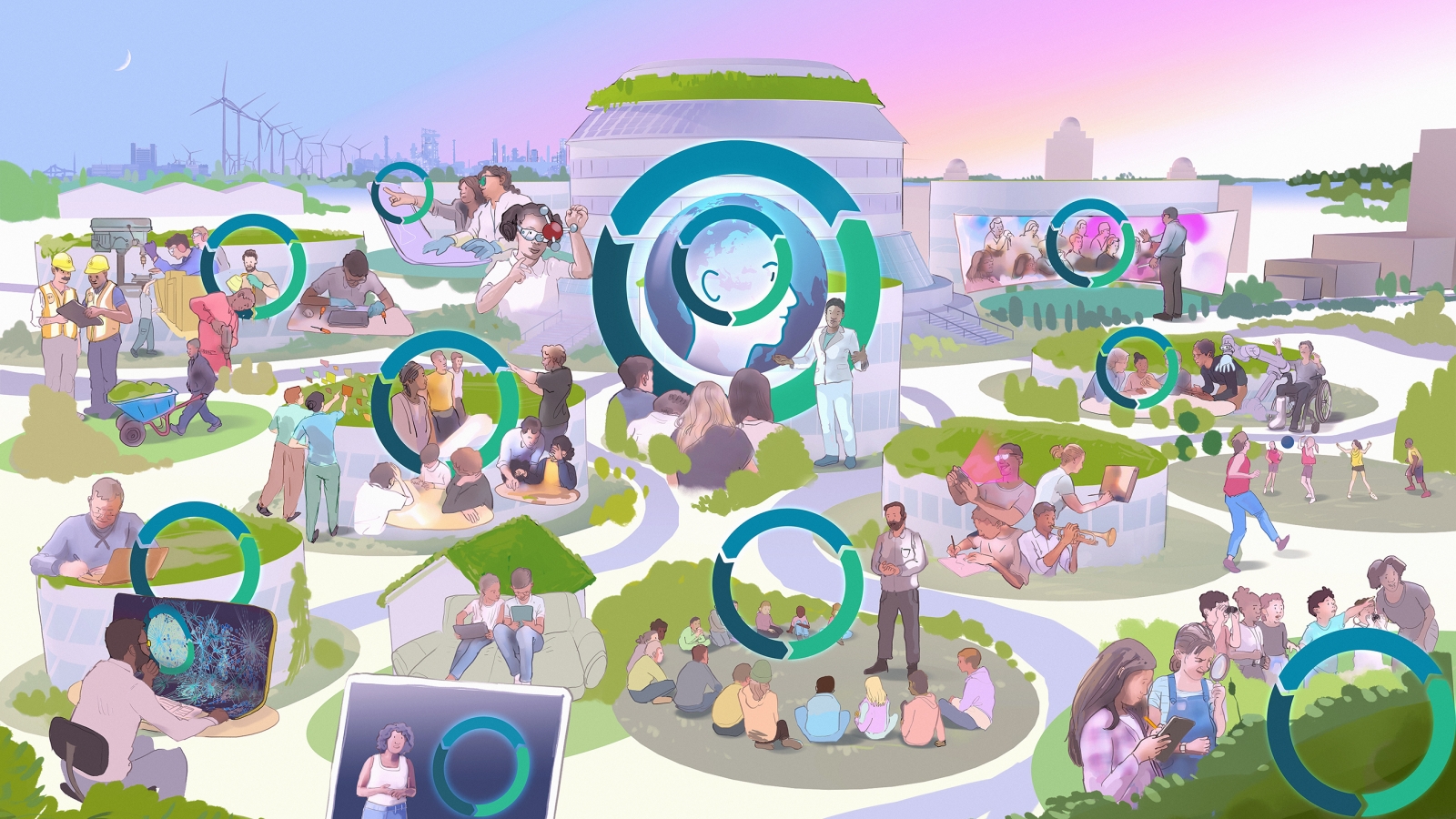
Learning in a circular economy
Learning plays an important role in a circular economy in the sense that education plays a crucial role in instilling a circular mindset, as well as a focus on lifelong learning. On an organisational level, there are a lot of changes: learning systems are not just more focused on economic growth, but also on welfare and prosperity.
Moreover, we learn not only at school, but the whole society is involved in the learning activity. Thus, the learning process is organised intergenerationally and tailored to the learner and works with learning networks. In these learning ecosystems, we pursue both collective and individual learning goals and also learn a lot from each other (peer-to-peer learning).
Moreover, self-fulfilment and personal development have become much more important, and care and health are embedded in the learning process. All this creates a warm society. Finally, there is a strong commitment to STEM profiles and eco-design at all levels of education.
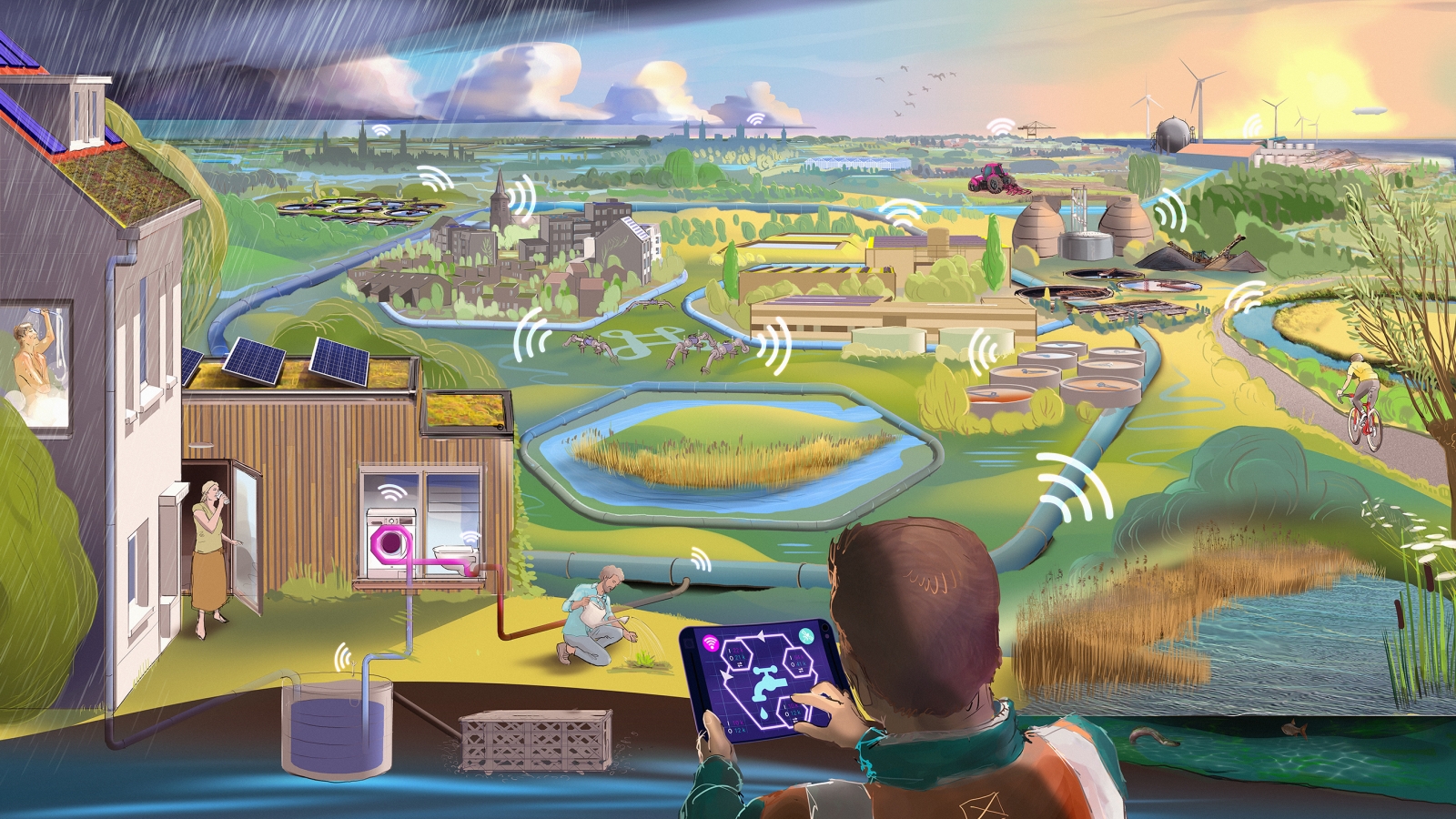
Water in a circular economy
Our water cycle is under pressure, especially under the influence of climate change. We therefore need to adapt our water consumption in order to continue to guarantee our water supply. By 2050, we want to have developed a water-neutral economy in which each "type" of water is used optimally according to its required quality.
On an organisational level, we do this by buffering, infiltrating and reusing water to the maximum extent and, on the other hand, limiting our use. Moreover, all real costs are charged so that we pay the real water price. Through partnerships and collectives, cycles are closed locally.
In addition, new business models have also emerged based on prosumption that connect different demand systems and sectors. The result is a water economy that functions as one big system. On a social level, consumers and producers now share responsibility for our water consumption. This ensures that, on the one hand, our water consumption goes down in absolute terms and, on the other hand, different water qualities are used for different functions. Using drinking water for everything is a thing of the past. Finally, technological developments ensure better monitoring via digital water data and a W-level for homes (cf. EPC for energy).
Technological pilots further ensure the development of a disruptive water system and, via industrial symbiosis, companies exchange their waste (water) with each other so that another player can use it again as a raw material. Finally, numerous technological breakthroughs around process intensification ensure that our water consumption decreases globally.
.png)
